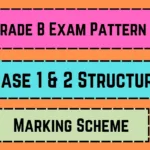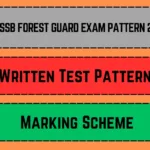Navigating the academic landscape of Class 11 under the Central Board of Secondary Education (CBSE) can be a pivotal experience for students. This phase not only bridges the foundational knowledge from earlier classes but also sets the stage for the rigorous demands of Class 12. Understanding the passing criteria, subject-wise requirements, and score calculations is essential for students aiming to excel in their academic journey.
Key Highlights
| Key Point | Details |
|---|---|
| Organization Name | Central Board of Secondary Education (CBSE) |
| Passing Marks | Minimum 33% in each subject |
| Theory-Practical Split | Separate passing required in both components |
| Grading System | Nine-point scale (A1 to E) |
| Compartment Exams | Available for students failing in one or two subjects |
| Merit Certificates | Awarded to top 0.1% of candidates in each subject |
| Exam Duration | Typically 3 hours per subject |
| Assessment Components | Theory exams, practicals, and internal assessments |
| Official Website | cbse.gov.in |
Understanding the Passing Criteria
In Class 11, CBSE mandates that students must secure a minimum of 33% marks in each subject to be declared pass. This criterion applies individually to both theory and practical components. For instance, if a subject like Physics has a theory paper of 70 marks and a practical exam of 30 marks, a student needs to score at least 23 marks in theory and 10 marks in practicals to pass.
Subject-wise Passing Requirements:
| Subject | Theory Marks | Practical Marks | Minimum Theory Marks | Minimum Practical Marks |
|---|---|---|---|---|
| Physics | 70 | 30 | 23 | 10 |
| Chemistry | 70 | 30 | 23 | 10 |
| Biology | 70 | 30 | 23 | 10 |
| Mathematics | 100 | – | 33 | – |
| English | 100 | – | 33 | – |
| Computer Sci. | 70 | 30 | 23 | 10 |
Note: Subjects without a practical component require a minimum of 33 marks out of 100 in theory.
Grading System and Score Calculation
CBSE employs a nine-point grading scale to evaluate student performance, ranging from A1 (highest) to E (fail). The grades correspond to specific percentage ranges and grade points, as illustrated below:
| Grade | Marks Range (%) | Grade Point |
|---|---|---|
| A1 | 91-100 | 10 |
| A2 | 81-90 | 9 |
| B1 | 71-80 | 8 |
| B2 | 61-70 | 7 |
| C1 | 51-60 | 6 |
| C2 | 41-50 | 5 |
| D1 | 33-40 | 4 |
| D2 | 21-32 | 3 |
| E | 0-20 | 2 |
To calculate the overall grade point average (GPA), sum the grade points of all subjects and divide by the number of subjects. For example, if a student has the following grades:
- Mathematics: B1 (8)
- Physics: A2 (9)
- Chemistry: B2 (7)
- English: A1 (10)
- Computer Science: B1 (8)
The GPA would be (8+9+7+10+8)/5 = 8.4.
Real-Life Example: Anjali’s Academic Journey
Anjali, a Class 11 student, was particularly anxious about her Physics performance. Despite her dedication, she found the subject challenging. In the final exams, she scored 22 out of 70 in theory and 12 out of 30 in practicals. While she excelled in practicals, her theory score fell short by one mark, leading to a compartment exam. This experience underscored the importance of balancing both components to meet the passing criteria.
Expert Insights on Academic Preparedness
Educational experts emphasize the significance of consistent study habits and understanding the exam pattern. Dr. Meera Singh, an education consultant, advises, “Students should focus on both theory and practical aspects of subjects. Regular revisions and hands-on practice can bridge the gap between understanding and application.”
Compartment Exams: A Second Chance
CBSE provides students who do not meet the passing criteria in one or two subjects with an opportunity to appear for compartment exams. These exams are typically scheduled a few months after the main results, allowing students to improve their scores without losing an academic year.
Compartment Exam Details:
| Aspect | Details |
|---|---|
| Eligibility | Students failing in one or two subjects |
| Attempts Allowed | Up to three |
| First Attempt | July/August of the same year |
| Second Attempt | March/April of the following year |
| Third Attempt | July/August of the following year |
Importance of Internal Assessments
Internal assessments play a crucial role in the overall evaluation process. These assessments, conducted by schools, often include periodic tests, project work, and class participation. While they may not always contribute directly to the final board marks, they provide continuous feedback on a student’s progress and can influence final grades.
Components of Internal Assessment:
| Component | Description |
|---|---|
| Periodic Tests | Regular short tests to assess ongoing understanding |
| Project Work | Subject-specific projects to encourage practical application of concepts |
| Class Participation | Evaluation based on engagement and contribution during classes |
Research-Backed Strategies for Academic Success
Studies have shown that active learning techniques, such as group discussions and problem-solving sessions, enhance understanding and retention. According to a report by the National Training Laboratories, the average retention rates for different teaching methods are as follows:
| Teaching Method | Average Retention Rate |
|---|---|
| Lecture | 5% |
| Reading | 10% |
| Audio-Visual | 20% |
| Demonstration | 30% |
| Discussion Group | 50% |
| Practice by Doing | 75% |
| Teaching Others | 90% |
Pooja Gupta is an education consultant specializing in exam results and admit cards. With a Master’s in Education and 6+ years of experience, Pooja loves helping students achieve their goals. She enjoys reading and practicing meditation.











